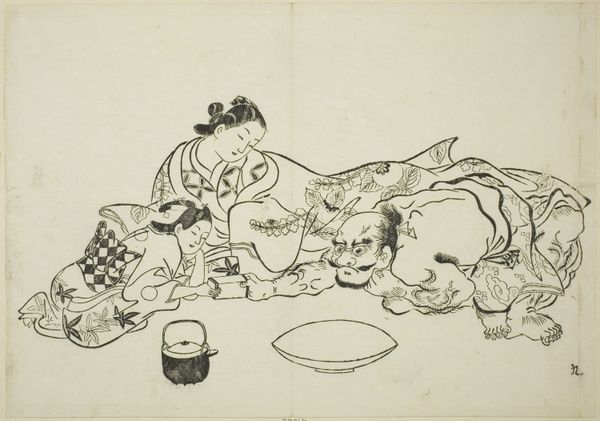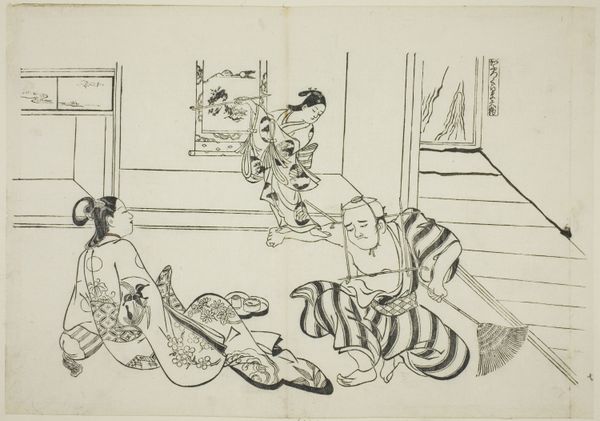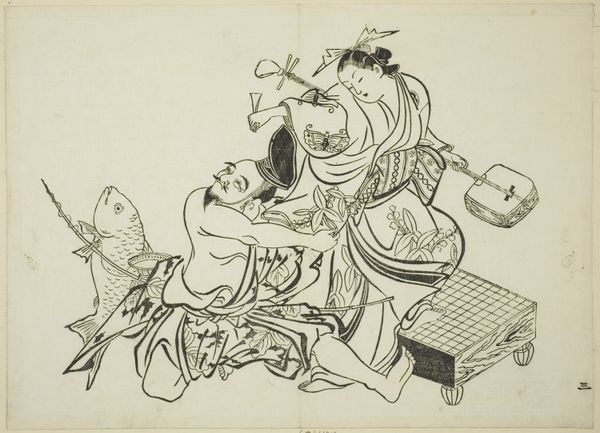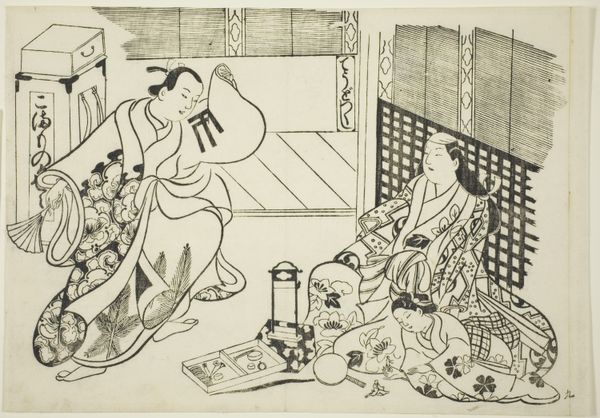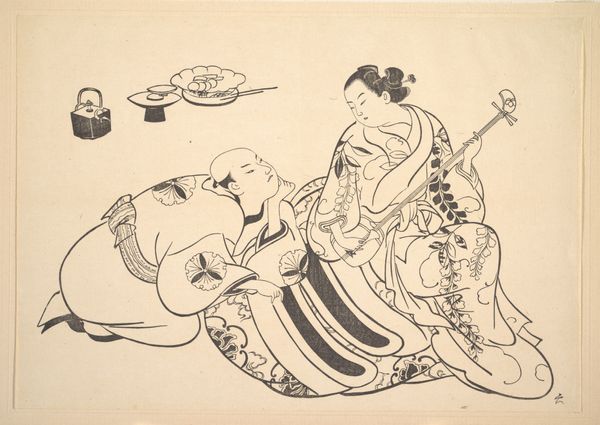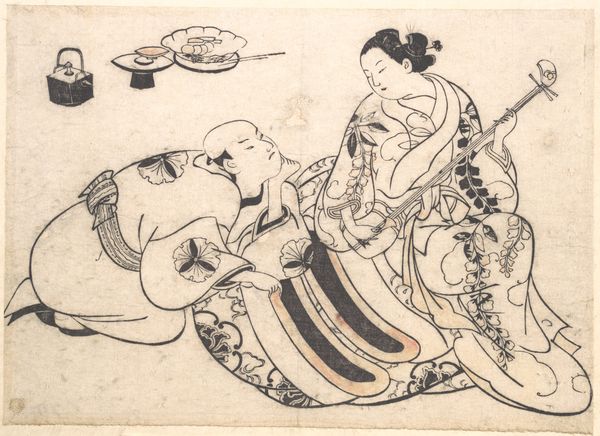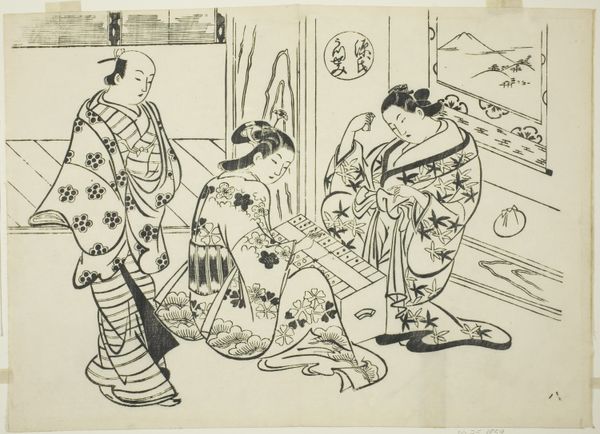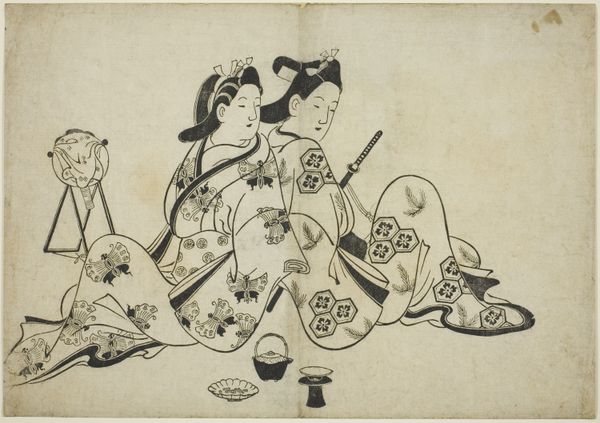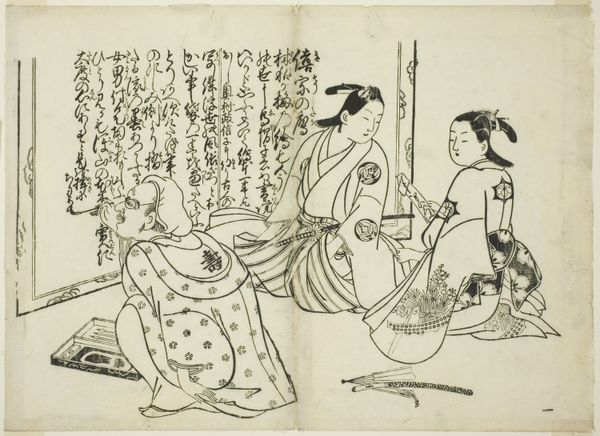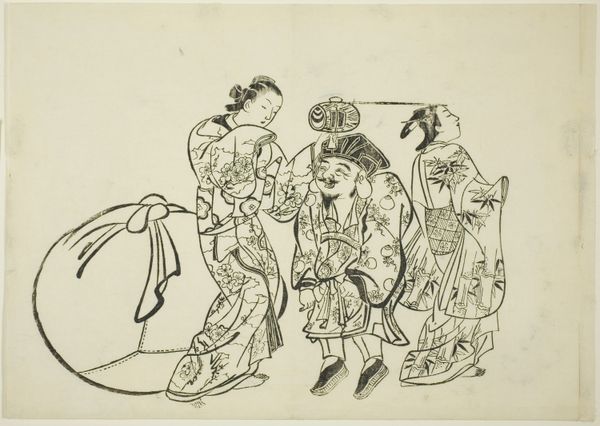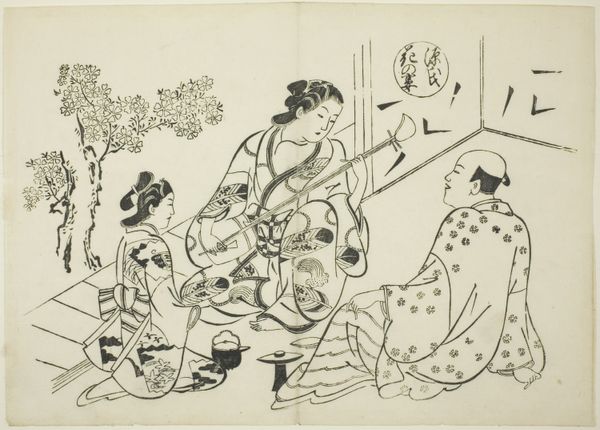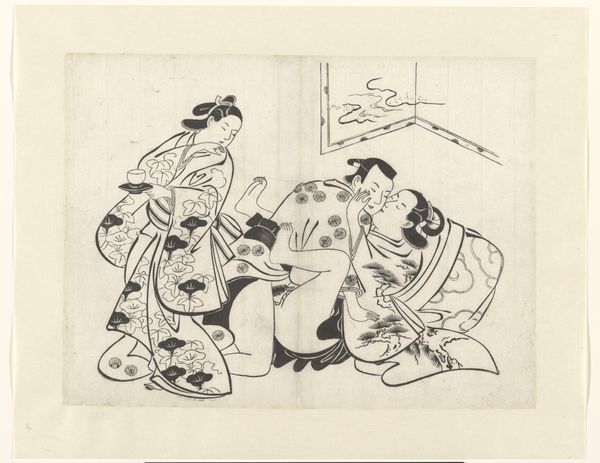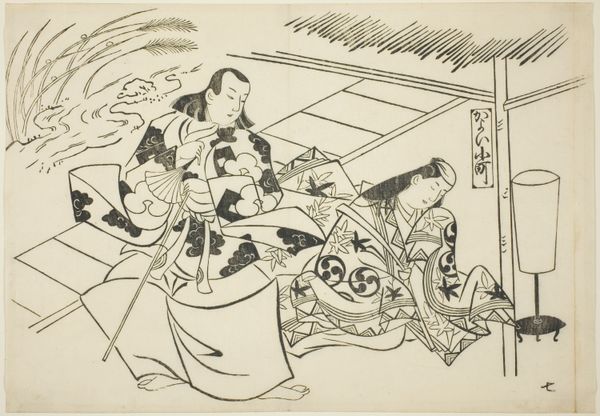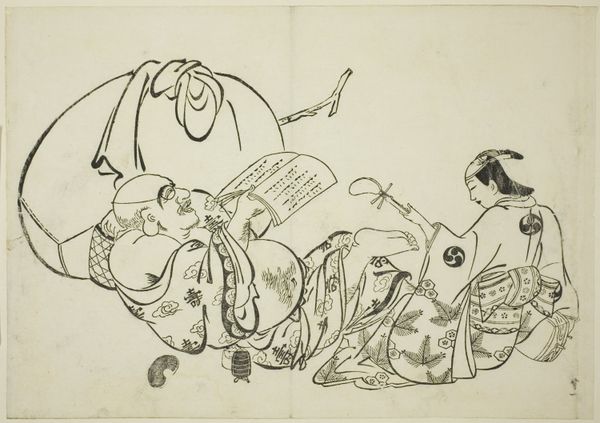
Courtesan Plying Shojo with Sake, no. 4 from a series of 12 prints c. 1708
0:00
0:00
print, paper, ink
# print
#
asian-art
#
ukiyo-e
#
junji ito style
#
figuration
#
paper
#
ink
#
genre-painting
#
erotic-art
Dimensions: 26.6 × 36.9 cm
Copyright: Public Domain
Editor: Okumura Masanobu's print, "Courtesan Plying Shojo with Sake, no. 4 from a series of 12 prints", was created around 1708 using ink on paper. The depiction of inebriation feels quite charged... what aspects stand out to you in this work? Curator: This image sparks many thoughts about power dynamics, particularly gendered ones, in Edo-period Japan. Consider the courtesan: her apparent agency in offering sake contrasts with the figure of Shojo, seemingly infantilized and dependent. Does this evoke any broader social commentaries for you? Editor: I see what you mean. It's not a straightforward image of pleasure. The Shojo's dishevelment and vulnerability are unsettling, making me wonder about the implied exchange within this pleasure transaction. What can Ukiyo-e prints like this tell us about gender and social expectations? Curator: Ukiyo-e prints often functioned as a form of visual communication reflecting and shaping social attitudes. By depicting the courtesan, usually a woman of considerable accomplishment and cultural influence, and a mythical, perpetually youthful creature, Masanobu perhaps plays with idealized roles and exposes their inherent contradictions and anxieties surrounding control, desire, and representation. The erotic element is key; do you see a political dimension in how pleasure is portrayed? Editor: Absolutely. It challenges a simple interpretation of “erotic art” by suggesting a subversion, perhaps even a critique, of dominant patriarchal structures through the negotiation of desire. So, looking beyond the aesthetic appeal, this print is involved in a deeper social discourse. Curator: Precisely. And considering this was a print, made for wide distribution, the artist invites us to reconsider our own voyeuristic consumption and recognize the complicated layering within a seemingly simple scene. What do you take away from our discussion? Editor: I’ve realized that the print’s apparent simplicity is deceptive and it speaks volumes about Edo-era social politics through its figures and their interactions. Curator: Yes, these prints often capture both fleeting beauty and lasting societal reflections.
Comments
No comments
Be the first to comment and join the conversation on the ultimate creative platform.
